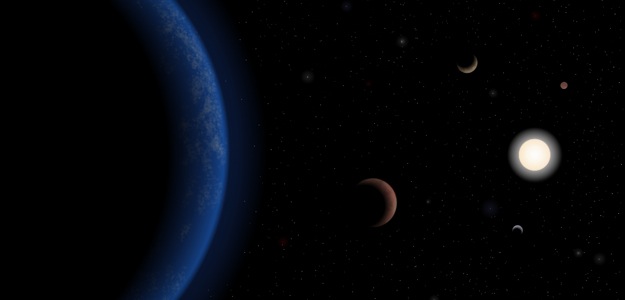 If the Curiosity Rover is proving a little too slow to find life on Mars for your liking, here’s something to distract you – and, perhaps, give you some hope for the future: Scientists have discovered five potential planets orbiting a star they believe is similar to our sun … and one of those planets may be able to support water on its surface.
If the Curiosity Rover is proving a little too slow to find life on Mars for your liking, here’s something to distract you – and, perhaps, give you some hope for the future: Scientists have discovered five potential planets orbiting a star they believe is similar to our sun … and one of those planets may be able to support water on its surface.
The star in question is Tau Ceti, only 12 light-years from Earth and visible to the naked eye. The planets surrounding the star are estimated to be two to six times bigger than earth, with one in particular measuring five times the size of our home planet. Said planet is lying in what’s commonly known as the star’s “Goldilocks Zone” – a position that is neither too hot nor too cold, but instead exactly the right environment to support the prospect of liquid surface water, and therefore, life.
It took information collated from more than 6,000 observations from three telescopes located in Hawaii, Chile, and Australia to discover the planetary system, believed to be the lowest-mass solar system detected yet. The system was discovered using a sensitive process known as the “radial velocity method,” which searches for a “wobble” in a star’s movement caused by the gravitational pull of orbiting planets. According to Professor Steve Vogt of the University of California at Santa Cruz, who is part of the research team responsible for the discovery, uncovering the planets “is in keeping with out emerging view that virtually every star has planets, and that the galaxy must have many such potentially habitable Earth-sized planets. They are everywhere, even right next door.”
Sure enough, upwards of 800 planets have been discovered since the 1990s, mostly close to stars similar to Tau Ceti or our own sun. Chris Tinney, a professor at the University of New South Wales and another member of the international team responsible for the discovery, suggested that that number may just be a small fraction of what’s really out there. “As we stare at the night sky, it is worth contemplating that there may well be more planets out there than there are stars, some fraction of which may well be habitable,” he said. R. Paul Butler of Washington state’s Carnegie Institution, also on the team, believes that the group’s new technique for discovering the planet will unlock “secrets of our nearest companion stars and their previously hidden reservoirs of potentially habitable planets.”
More information about Tau Ceti and its six planetary system appears in the catchily-titled “Habitable-zone super-Earth candidate in a six-planet system around the K2.5V star HD 40307,” a report written by the group that appears in the latest issue of Astronomy and Astrophysics.


